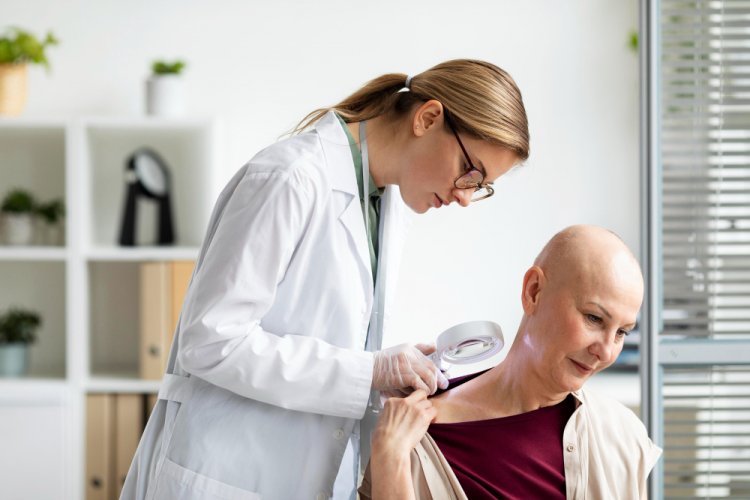Basal Cell Carcinoma: A Comprehensive Overview
Basal cell carcinoma (BCC) is the most common form of skin cancer, accounting for approximately 80% of all diagnosed cases. While it is generally considered less aggressive compared to other types of skin cancer such as melanoma, BCC can still cause significant morbidity if left untreated. In this comprehensive overview, we will delve into the various aspects of basal cell carcinoma including its epidemiology, etiology, clinical presentation, diagnosis, treatment options, and prognosis.

Epidemiology
Basal cell carcinoma primarily affects fair-skinned individuals, particularly those with a history of chronic sun exposure. Although it can occur in individuals of any race or ethnicity, it is more prevalent in populations with lighter skin types. The incidence of BCC has been steadily increasing over the past few decades, likely due to factors such as increased sun exposure, depletion of the ozone layer, and an aging population.
Etiology
The primary risk factor for the development of basal cell carcinoma is ultraviolet (UV) radiation from the sun or artificial sources such as tanning beds. Other risk factors include a history of sunburns, outdoor occupation, older age, male gender, family history of skin cancer, and immunosuppression. Additionally, certain genetic syndromes such as basal cell nevus syndrome (Gorlin syndrome) predispose individuals to developing multiple BCCs at a young age.
Clinical Presentation
Basal cell carcinomas typically present as slow-growing, painless lesions on sun-exposed areas of the skin such as the face, neck, and ears. These lesions may appear as shiny, pearly nodules with telangiectasias (dilated blood vessels) or as non-healing ulcers with rolled, raised borders. In some cases, BCCs may resemble benign skin conditions such as seborrheic keratosis or eczema, making clinical diagnosis challenging.
Diagnosis
The diagnosis of basal cell carcinoma is usually made through a combination of clinical evaluation and skin biopsy. Dermoscopy, a non-invasive technique that allows for the magnified examination of skin lesions, can aid in the diagnosis of BCC by revealing characteristic features such as arborizing vessels, ulceration, and blue-gray ovoid nests. In certain cases, additional imaging studies such as ultrasound or MRI may be performed to assess the extent of disease involvement.
Treatment Options
Treatment options for basal cell carcinoma vary depending on factors such as the size, location, and histologic subtype of the lesion as well as the patient's overall health and treatment preferences. Common treatment modalities include:
- Surgical excision: Removal of the tumor with a margin of healthy tissue to ensure complete eradication.
- Mohs micrographic surgery: A specialized technique that involves the sequential removal and microscopic examination of thin layers of tissue until no tumor cells are detected.
- Cryotherapy: Destruction of the tumor using freezing temperatures.
- Curettage and electrodessication: Scraping away of the tumor followed by cauterization of the wound.
- Topical therapies: Application of medications such as imiquimod or 5-fluorouracil to the affected area.
- Radiation therapy: Use of high-energy radiation to kill cancer cells.
Prognosis
The prognosis for basal cell carcinoma is generally excellent, with a five-year survival rate exceeding 95%. However, recurrence rates can vary depending on the treatment modality used and the aggressiveness of the tumor. Regular follow-up visits with a dermatologist are recommended for surveillance of recurrent or new skin lesions and for monitoring overall skin health.
In conclusion, Basal cell carcinoma is a common form of skin cancer that is primarily caused by exposure to ultraviolet radiation. While it is typically slow-growing and rarely metastasizes, early detection and treatment are essential to prevent local tissue destruction and disfigurement. Through a combination of public education, sun protection measures, and routine skin examinations, the burden of basal cell carcinoma can be minimized, and outcomes optimized for affected individuals.
#BasalCellCarcinoma #SkinCancer #BCCAwareness #SkinHealth #UVProtection #MohsSurgery #SkinCheck #EarlyDetection #CancerAwareness #Dermatology #HealthySkin #SunSafety #CancerPrevention #Healthcare #SkinCareTips #Sunscreen #SkinCancerAwareness #HealthyLiving
Disclaimer:
The information provided in this article is for educational purposes only and should not be considered medical advice. If you have any health concerns or are experiencing symptoms, it is important to consult with a healthcare professional, such as a doctor or clinic, for proper diagnosis and treatment. Always seek the advice of your doctor or other qualified health provider with any questions you may have regarding a medical condition. Do not disregard professional medical advice or delay in seeking it because of something you have read in this article.
What's Your Reaction?





















